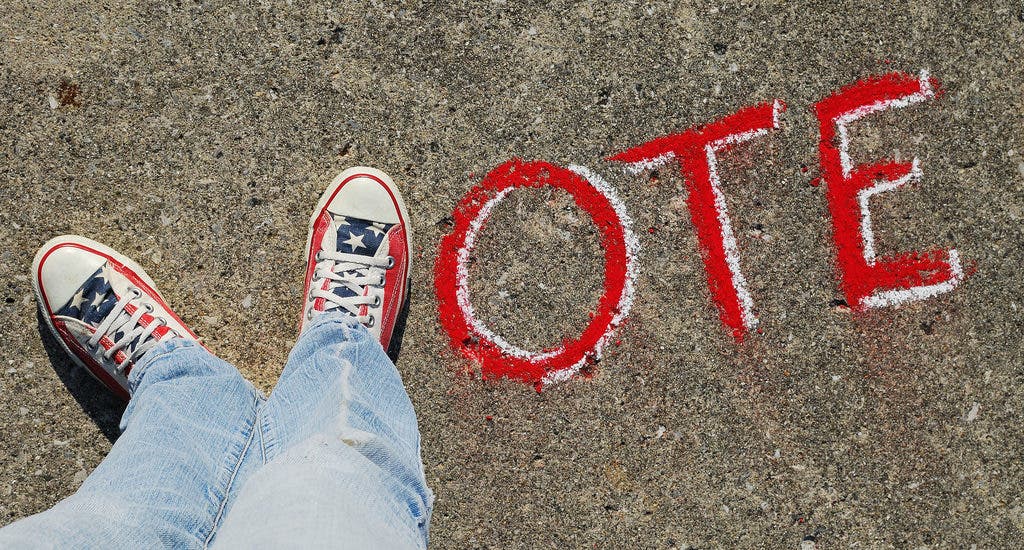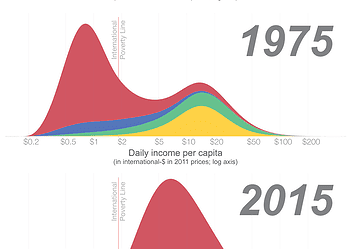Declining trends in voter turnout aren’t necessarily tied to people’s disillusionment with politics. In fact, this may be a product of how democracy takes hold in a country and the interplay of everyday factors.

A while back I wrote about how democracy seems to be crumbling in the West — and a big part of what weakens democracies in the first place is popular disengagement with the political sphere. The two come together pretty neatly, pointing to an obvious conclusion: democracy is failing because people don’t rise up to their part of the deal, which is to actually go and vote.
Figures on voter turnout definitely support this conclusion. In the span of only one generation, countries that made the shift from single-party rule to free elections have seen double-digit declines in voter turnout. Romania, for example, has seen turnout decline by 47% since the founding elections, held in 1990 after the fall of communism, and 2010. South Korea has seen a 30% decrease from 1988 to 2008.
So why don’t we vote?
Common wisdom has held that this means people are disillusioned with politicians, which they feel are unresponsive to their needs. The rising tide of populism sweeping the West seems to suggest that’s true.
But a new paper published by Filip Kostelka, a Postdoctoral Fellow and Research Chair in Electoral Studies at the Département de science politique of the Université de Montréal, says this isn’t necessarily the case. As part of his post-doc research, Kostelka performed an exhaustive study of the legislative elections in all 91 young-democracies — countries that took up democracy between 1939 and 2015. Half of these, he reports, have seen a sharp decline in voter turnout — but the reasons people missed the voting booth were different in each case, and are tied to how democracy first took root in each country.
Kostelka’s study is the most comprehensive analysis of voter dynamics in the 20th century, and as such offered a unique glimpse into how it happens in different countries. He found that when democracy was installed following the efforts of a strong opposition against dictatorial rule, voting turnout in the founding elections was massive. This sets an unrealistic benchmark, which subsequent turnouts can’t achieve as political furor simmers down — so inevitably, such countries will see a decline in turnouts over time. By contrast, countries that made the switch under the supervision of the previous authoritarian regime didn’t see this spike in voter turnout during their first elections. Turnout figures weren’t significantly different from those in established democracies, where rates have been mildly declining since the 1970s, Kostelka reports.
Spain and Portugal, for example, both moved away from a dictatorship in the 70s but show some important differences today. Turnout in Spain has decreased by roughly 3%, while in Portugal it’s dropped by about 20%. The difference between the two is that Spain’s democratization was tightly controlled by the regime, whereas Portugal made the transition through strong democratic opposition to the government.
Going down but not going under
These findings are good news if you’re a fan of democracy (which you should be) since it means people aren’t skipping vote day because they’re fed up with democracies.
“We should be very careful when we interpret declines in voter turnout; it doesn’t necessarily mean that people are dissatisfied,” said Kostelka.
“When voters cease to participate, it’s not because they are getting disenchanted with the ideal of democracy as a form of government. That’s something you hear a lot from commentators and pundits, but it’s a misconception; they’re really mistaken.”
His work also revealed that in countries such as the above-mentioned Romania, where the president is directly elected in a separate election, turnout is lower for legislative elections. In other places, such as Hungary or Serbia, where one party is much stronger than the opposition, turnout is also low. Places such as Belgium or Australia, where voting is compulsory and enforced, naturally see higher turnout rates.
Post-communist countries, however, stick out from the background. Kostelka’s analysis shows that these countries have some residual voter decline that can’t be accounted either by the democratization context we’ve outlined earlier, or the global trend towards lower turnouts. He believes it comes down to emigration. Many citizens who are eligible to vote in these countries have moved to Western countries in hopes of brighter futures. They thus don’t participate in elections back home and have a noticeable effect on turnout, since ex-communist countries usually have automatic voter registration systems in place.
Overall, turnout rates “appear to be almost entirely a function of what happens before and during regime change, not what happens afterward,” Kostelka concludes.
“It is true that since the 1970s, voter turnout declines have become more frequent. Nevertheless, this is a tendency that new democracies share with established democracies.”
The paper “Does Democratic Consolidation Lead to a Decline in Voter Turnout? Global Evidence Since 1939” has been published in the journal American Political Science Review.






